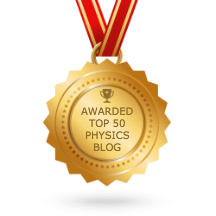Recently I wrote a review of the bidomain model of cardiac tissue. Russ Hobbie and I discuss the bidomain model in Section 7.9 of Intermediate Physics for Medicine and Biology. It’s a mathematical description of heart muscle that keeps track of the voltages and currents both inside and outside the myocardial cells. What I wrote is not really an academic review article, it’s not a history, and it’s not a memoir. To tell you the truth, I’m not sure what it is. I originally thought I’d try and publish it, but I’m not sure who would accept such an unusual article. So, I decided it would be best to distribute it on my blog. There is little I can do for my dear readers, but I can give them this review.
The format is to describe the bidomain model by considering twelve publications. Below is a list of the articles I chose. Each article is meant to feature one researcher, whose names are listed in bold.
Tung L (1978) A bi-domain model for describing ischemic myocardial dc potentials. PhD Dissertation, Massachusetts Institute of Technology.
Plonsey R, Barr RC (1984) Current flow patterns in two-dimensional anisotrpic bisyncytia with normal and extreme conductivities. Biophys J 45:557–571.
Sepulveda NG, Roth BJ, Wikswo JP, Jr (1989) Current injection into a two-dimensional anisotropic bidomain. Biophys J, 55:987-999.
Henriquez CS, Plonsey R (1990b) Simulation of propagation along a cylindrical bundle of cardiac tissue. II. Results of the simulation. IEEE Trans Biomed Eng 37:861–875.
Neu JC, Krassowska W (1993) Homogenization of syncytial tissue. Crit Rev Biomed Eng 21:137–199.
Wikswo JP Jr, Lin SF, Abbas RA (1995) Virtual electrodes in cardiac tissue: A common mechanism for anodal and cathodal stimulation. Biophys J 69:2195–2210.
Trayanova N, Skouibine K, Aguel F (1998) The role of cardiac tissue structure in defibrillation. Chaos 8:221–233.
Knisley SB, Trayanova N, Aguel F (1999) Roles of electric field and fiber structure in cardiac electric stimulation. Biophys J 77:1404–1417.
Efimov IR, Cheng Y, van Wagoner DR, Mazgalev T, Tchou PJ (1998) Virtual electrode-induced phase singularity: A basic mechanism of defibrillation failure. Circ Res 82:918–925.
Entcheva E, Eason J, Efimov IR, Cheng Y, Malkin R, Claydon F (1998) Virtual electrode effects in transvenous defibrillation-modulation by structure and interface: Evidence from bidomain simulations and optical mapping. J Cardiovasc Electrophysiol 9:949–961.
Rodriguez B, Li L, Eason JC, Efimov IR, Trayanova NA (2005) Differences between left and right ventricular chamber geometry affect cardiac vulnerability to electric shocks. Circ Res 97:168–175.
Bishop MJ, Boyle PM, Plank G, Welsh DG, Vigmond EJ (2010) Modeling the role of the coronary vasculature during external field stimulation. IEEE Trans Biomed Eng 57:2335–2345.
My biggest worry is that I’ve left too much out. For instance, I could easily have featured other researchers, such as Rick Gray, Jamey Eason, Roger Barr, Marc Lin, Felipe Aguel, David Geselowitz, and others. Also, I suspect there are many researchers who, if they read this review, will be hurt because they are completely ignored. All I can say is, I’m sorry. I tried to relate the story as best as I can remember it, but I may have remembered some things wrong.
You can download my review here. I hope you enjoy reading the article as much as I enjoyed writing it. It was an honor to work on this topic with so many outstanding scientists. As Randy Travis sings, these scientists are my heroes and friends.



No comments:
Post a Comment